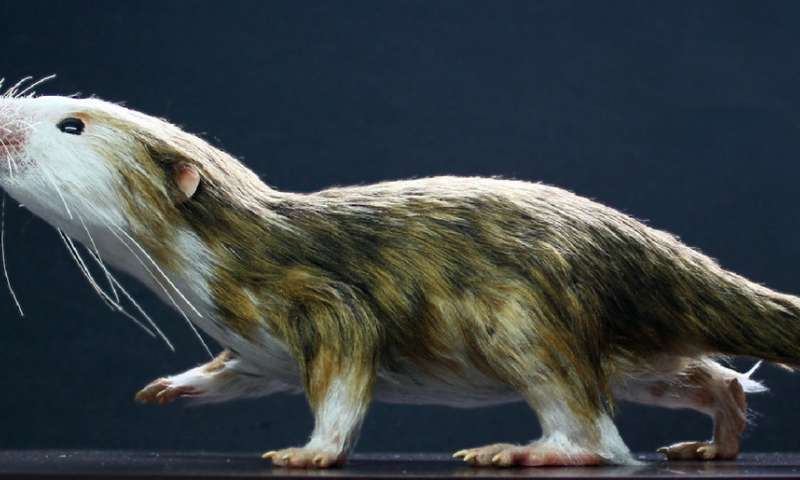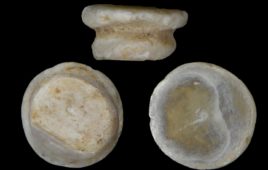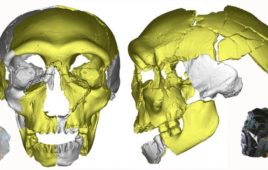
Life reconstruction of the mammaliaform Morganucodon found in Jurassic sediments of Wales and China. Morganucodon was one of the smallest fossil mammal ancestors with a size of 4-6cm. Credit: Bob Nicholls, Paleocreations.com
A new study published today in Nature shows that getting smaller was a key factor contributing to the exceptional evolution of mammals over the last 200 million years.
The origin of modern mammals can be traced back more than 200 million years to the age of dinosaurs. But while dinosaurs evolved to become some of the largest land animals, for the following 150 million years, the ancestors of all modern mammals pursued an entirely different strategy: getting very small.
An international team of scientists from the United Kingdom and the US have used modern computer analysis to take a look at what happened to the skeleton of our tiny mammal ancestors.
Modern mammals are unique in having a lower jaw consisting of just a single bone that bears teeth. In contrast, all other vertebrates possess complex lower jaws formed by at least five or more bones joined together. In the course of evolution, fossils show that the lower jaw of mammalian ancestors became simplified and a new jaw joint was formed, while some of the other bones moved into the middle ear to aid in hearing.
The team’s research focussed on the long-standing question of how it was possible to simplify and restructure the lower jaw, while still being able feed and hear. Using X-ray computed tomography (CT) scanning of several fossil skulls and lower jaws, the researchers generated digital models which were subjected to different computer simulations.
Their results showed that the small size of the fossil mammals significantly reduced the stresses in the jaw bones when feeding, while still being powerful enough to capture and bite through prey, such as insects.
Dr. Stephan Lautenschlager, lead author and lecturer at the University of Birmingham, said: “Our results provide a new explanation of how the mammalian jaw evolved over 200 million years ago. Getting very small appears to have been crucial for our mammalian ancestors. This allowed them to reduce the stresses in the jaw during feeding and made the restructuring of the jaw bones possible.”
Professor Emily Rayfield from the University of Bristol who lead the study added: “The evolution of the mammalian jaw joint has perplexed palaeontologists for over 50 years. Using computational methods we can offer explanations to how our mammalian ancestors were able to maintain a working jaw while co-opting bones into a complex sound detection system. Our research is about testing ideas of what makes mammals unique among the animal kingdom, and how this may have come about.”
‘The role of miniaturisation in the evolution of the mammalian jaw and middle ear’ by Stephan Lautenschlager, Pamela Gill, Zhe-Xi Luo, Michael J. Fagan and Emily Rayfield is published in Nature.




